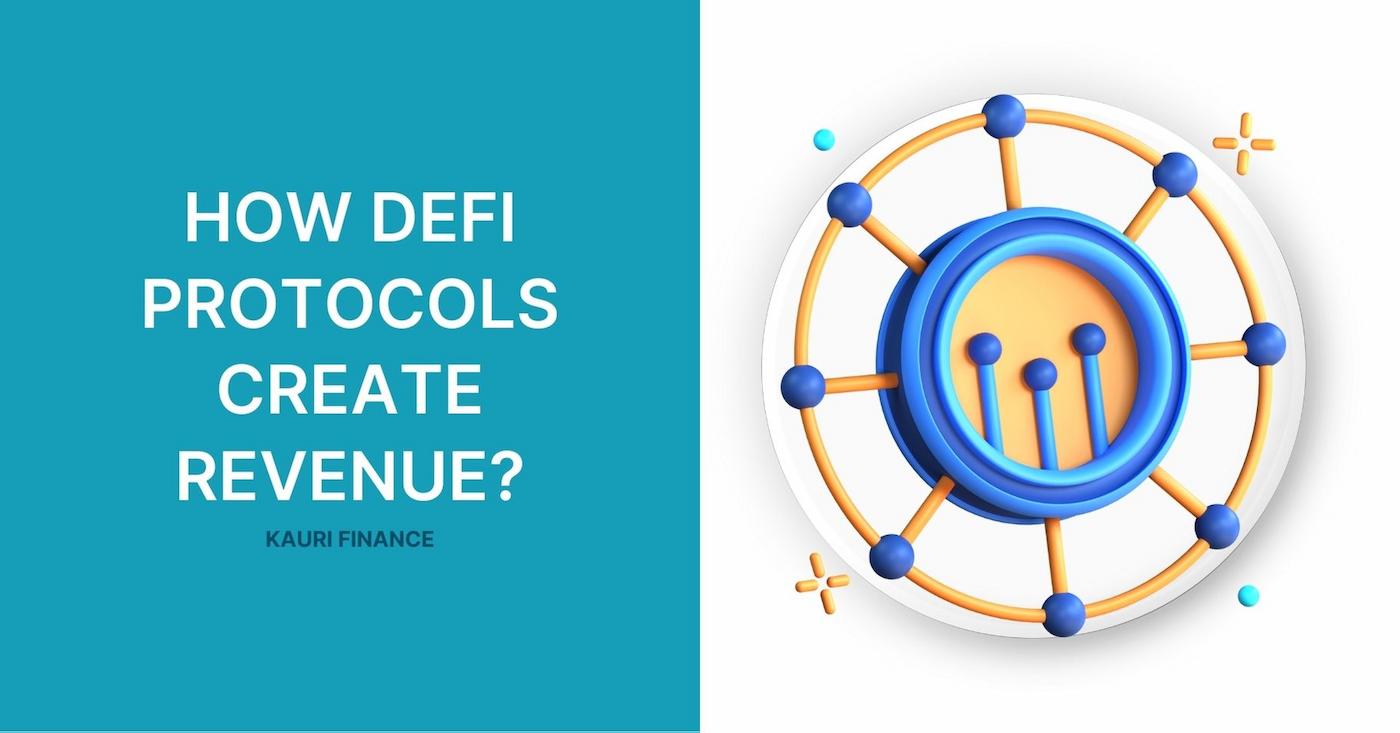
How DeFi Protocols Create Revenue?

Decentralized finance, or DeFi, is opening up new opportunities for cryptocurrency users looking to generate passive income. However, given the sheer number of DeFi protocols available, each promising different benefits and returns, choosing where to invest can seem overwhelming. At first glance, many platforms are similar to each other, but their approaches to generating income can differ significantly, which affects not only the potential returns but also the risks.
With this in mind, it is imperative to understand exactly how platforms manage to generate income. By understanding the revenue generation mechanisms of DeFi protocols, investors will be able to make more informed decisions, choosing platforms that better suit their investment strategies and risk appetite.
How do DeFi Protocols Work?
Decentralized finance, or DeFi, has the potential to change the financial landscape by using blockchain technology to provide a set of financial services traditionally monopolized by banks and other financial institutions. Below, we outline how DeFi protocols function and the wide range of services they provide:
Understanding DeFi protocols:
DeFi protocols operate on blockchain networks, primarily Ethereum, using smart contracts - self-executing contracts with terms of agreement written directly into the code. These protocols create decentralized applications (dApps) that facilitate financial transactions without intermediaries. By automating and securing these services using blockchain technology, DeFi protocols provide a win-win environment where transactions are transparent and verifiable by all participants.
Types of services offered by DeFi:
- Exchanges (DEX): Decentralized exchanges allow users to trade cryptocurrencies directly from their wallets, without the involvement of a central authority. This not only increases security by reducing the risk of an exchange being hacked, but also preserves privacy and reduces trading fees.
- Credit Service: DeFi platforms offer decentralized lending services where users can borrow against their cryptocurrency assets or lend them out, earning interest. These loans are managed by smart contracts that enforce terms and security.
- Liquidity Pools: Users can deposit their assets into liquidity pools that facilitate DEX trading and other activities within DeFi. In return, they receive a portion of transaction fees or other rewards distributed by the protocol.
- Staking and Farming: Users can invest their coins in the DeFi protocol to support network operations and earn rewards. Yield farming goes further, seeking to maximize returns through various DeFi protocols, often shifting assets depending on which opportunities are most profitable at the time.
User accessibility and autonomy:
One of the defining features of DeFi is its accessibility. Anyone with an Internet connection and a digital wallet can interact with DeFi protocols, regardless of geographic location or financial status. This universality is especially important for regions with limited access to traditional banking services.
Absence of restrictions and intermediaries:
DeFi is inherently constraint-free, meaning it has no intermediaries. Anyone can create, participate or innovate on top of existing protocols without seeking approval from a central authority. This openness fosters innovation and growth in the DeFi ecosystem. In addition, the absence of intermediaries not only reduces costs, but also significantly reduces transaction times, making financial services more efficient and direct.
How do DeFi Protocols Generate Revenue?
Decentralized Finance (DeFi) protocols have not only innovated financial services, but have also developed unique revenue generation models. How these models work is important to everyone in the ecosystem, from users to investors. Here's how DeFi protocols manage their operational costs and generate revenue:
Operating costs of DeFi services:
DeFi protocols operate on blockchain technology, primarily using smart contracts to automate their services. These smart contracts are executed in decentralized networks such as Ethereum, requiring computing power provided by the nodes in the network. The operational costs of providing these services are mainly related to the computing resources required to execute and maintain smart contracts safely and efficiently.
Transaction Charge Coverage:
- Transaction Fees (Gas Fees): Users of DeFi protocols pay transaction fees, often referred to as gas fees, to compensate for the computational energy required to execute and validate transactions on the blockchain. These fees depend on network utilization and transaction complexity.
- Service-specific Fees: In addition to gas fees, DeFi protocols may charge additional fees specific to the services they offer. These fees are designed to cover the costs of maintenance, development, and ensuring the continued operation of the protocol.
Revenue models for the various DeFi platforms:
This is how some of the platforms/services work:
- Decentralized Exchanges (DEX):
- Token Exchange Fee: Users typically pay a fee to exchange tokens on DEX. This fee is usually a small percentage of the transaction amount. The fees collected replenish the DEX operator's coffers or liquidity reserves, which can be used to fund further development or incentivize liquidity providers.
- Borrowing Protocols:
- Borrowing fees: When users borrow from DeFi's lending protocols, they pay a borrowing fee. These fees are split: part of them compensates liquidity providers who lend capital, providing them with a return on their investment. The remaining part of the fee goes to keep the protocol running, covering costs such as auditing smart contracts, system development and modernization.
The effect of generating revenue to maintain the protocol:
Revenue generation is essential to the stability of DeFi protocols. By charging transaction and service fees, these platforms can provide themselves with the financial resources needed to maintain and improve their services over time. Moreover, these fees can serve as a buffer against market volatility, ensuring that the protocol can continue to operate even during downturns.
In this way, DeFi protocols are not only changing financial services, but also utilizing innovative economic models to sustain their operations and growth.
Why is Revenue Important?
In the decentralized finance (DeFi) landscape, the generation and management of revenue are crucial not only for the sustainability of protocols but also for their capacity to attract and retain users. Understanding the multifaceted role of revenue within DeFi platforms can provide insights into their long-term viability and the potential benefits for users.
Covering Operational Costs and Generating Profit:
Revenue plays a fundamental role in covering the operational costs of running DeFi protocols. These costs include but are not limited to, development, maintenance, security audits, and upgrades of the platform. Without adequate revenue, protocols may struggle to maintain their infrastructure or innovate, potentially compromising security and functionality.
Beyond just covering costs, revenue generation also allows DeFi protocols to profit. These profits can be reinvested into the protocol to fuel growth, expand services, or improve existing offerings, enhancing the protocol's value proposition to users.
Revenue Sharing Mechanisms:
DeFi protocols often feature innovative revenue sharing mechanisms, particularly through the distribution of governance tokens:
- Governance Token Holders: Revenue sharing for token holders often occurs through dividends or fee-sharing mechanisms. Holders of governance tokens typically have the right to claim a portion of the protocol's revenue, aligning their interests with the success of the platform.
- Benefits to Stakers: Staking is another critical aspect where revenue sharing plays a part. Users who stake their tokens in the protocol may receive a portion of the fees generated from the platform’s operations. This not only provides an incentive to hold and stake tokens, thereby securing the network, but also offers stakers a steady return on their investment.
Impact on User Attraction and Liquidity:
- Attracting Users: Competitive revenue models can significantly enhance a protocol's attractiveness to new users. By offering higher returns on staking or more favorable revenue sharing terms, protocols can differentiate themselves in a crowded market.
- Enhancing Liquidity: Revenue generation is closely tied to liquidity. Higher revenues can allow DeFi protocols to offer better Annual Percentage Yields (APYs) to liquidity providers and yield farmers, making the platform more attractive for those looking to maximize returns. Enhanced liquidity also improves the overall stability and efficiency of the market, reducing slippage and providing better prices for users.
- Appeal to Yield Farmers: For yield farmers, who typically move their assets between protocols to capitalize on the best available yields, attractive revenue sharing and high liquidity are key factors in their decision-making process. Protocols that can sustain high revenue and thus offer better yields will naturally attract more capital, reinforcing their liquidity pools and creating a positive feedback loop that benefits all users.
How to Determine Revenue from the DeFi Protocol?
Using blockchain researchers and data aggregators:
To effectively understand the revenue of the DeFi protocol, you need to use tools that provide transparency and insight into its transactions and financial activities. Here's how you can do that:
- Blockchain Explorers: These tools allow you to view all transactions on the blockchain on which the DeFi protocol runs. For Ethereum-based protocols, explorers such as Etherscan are invaluable. You can view the smart contracts associated with the DeFi protocol to see the transaction history, including token exchanges and commission accrual.
- Data Aggregators: Platforms such as DeFi Pulse, Dune Analytics or DeFi Llama provide aggregated data about DeFi protocols. These sites collect information on total blocked value (TVL), daily active users and typical revenue streams such as trading commissions and interest payments. They offer a more user-friendly interface to analyze the economic activity of DeFi protocols.
Tips for effective research:
- Verify Sources: Always make sure that the data you use is from reliable and verified sources. It is preferable to use official protocol dashboards and reputed data aggregator sites.
- Compare Data: Examine multiple sources to compare data for consistency. Discrepancies may indicate errors or anomalies that require closer scrutiny.
- Historical analysis: Evaluate revenue trends over time to understand growth patterns and potential revenue cyclicality, which can help inform investment decisions.
Conclusion
You can familiarize yourself with the mechanics of DeFi by reading more about DeFi 2.0, yield farming, and other related topics on the KAURI FINANCE blog. These resources will help you better understand the opportunities and risks of DeFi.
Consider using Kauri Finance's innovative financial solutions, including our wallet, which combines the security of decentralized finance with the convenience of traditional banking. Our platform is designed to offer you the best of both worlds, keeping your crypto assets safe while making them easier to manage and grow.
Check the KAURI FINANCE blog regularly for updates, information and in-depth guides to help you navigate the complex DeFi landscape. Engaging in our content will not only enhance your understanding, but also keep you up to date with the latest trends and developments in the DeFi ecosystem.
